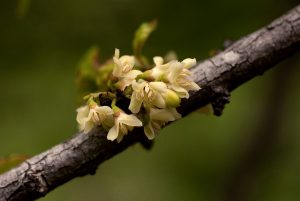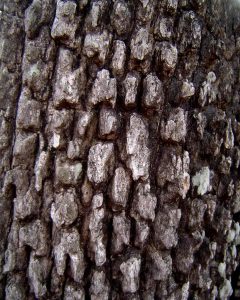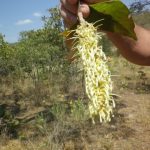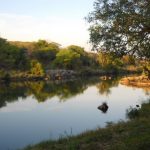TREE LIFE
OCTOBER 2017
MASHONALAND CALENDAR
Saturday October 7th: Botanic Gardens walk. Meet in the car park at 08.30. Lots flowering, lots of interest.
Friday 13th – Sunday 15th October 2017:
Moosh in da boosh: BirdLife Zimbabwe (BLZ) Mashonaland Branch has organised a bush weekend with a difference. Birders are totally catered for, firstly with the BLZ Bird Talk and then the usual early morning and late afternoon bird walks. However the Astronomy and Tree Societies are also being included in terms of talks and walks for trees and star gazing. There will also be other talks of interest, not finalised as yet, but talks on insects, snakes or butterflies or whatever to fill in the gaps.
This event will take place from Friday 13th to Monday 16th October at Lasting Impressions (check their web site) in Kadoma, situated just below the Claw Dam wall. Because this is a youth training camp, accommodation will be mostly in dormitories. You have to pretend that you’re on a houseboat and are sleeping on the top deck with your family and friends! They also have some 2/4 person tents or you can use your own. A charge of $100.00 per person will pay for Friday lunch and Dinner, Bed and Breakfast for the three days. The charge is reduced if you are using their tent and even less if you are using your own tent. If you need lunch on Saturday or Sunday, this will cost an additional $8.00 per meal. I’m told the food is really good. The only costs involved for this outing are the camp charges which are payable by card into their bank account. There is a shop on site selling souvenirs and cool drinks – but you can take your own drinks.
So what’s the purpose of this bush trip? It’s to have an occasion where you can rub shoulders with members of other societies. It will also give non-members an inkling as to what some societies do and of course all societies/clubs would like to gain a few members and above all – to have FUN!
You have till Friday 6th to register. If you are interested, send Tony Alegria an email and he will forward to you the programme and the payment details.
Saturday October 28th: Mukuvisi Woodlands – Blatherwick Road entrance. Because the days are longer and hotter we will meet at 15.00 at the gate. Please be on time so we can lock the gate before we walk and bring a drink for afterwards.
OUTING TO MUTARE, 16-17 SEPTEMBER 2017
About fifteen Harare members travelled to Mutare to join up with local colleagues for a sociable and instructive weekend in the Eastern Districts. The journey down itself was a treeing delight. Brachystegia and Pseudolachnostylis presented a kaleidoscope of spring colours, while Dombeya rotundifolia, Erythrina sp. and Acacia galpinii were in full bloom.
Most of the party stayed at the Mutare Club, a building with a distinctive silver dome dating back to 1897, which was originally the Stock Exchange. Homestead Guest House, where Dagmar and I stayed, was probably nearly as old; the original schoolhouse that housed the public rooms was built of corrugated iron, panelled with pine, with pine plank floors and pine plank or pressed steel ceilings.
Burma Valley:
Our first day was spent in a visit to the Matanusca Estate in the Burma Valley, for which we were joined by a large contingent of Mutare and Vumba residents. We were blessed by a cool breeze for most of the day, which kept the temperature at a reasonable level, as we were down to 700m above sea level. We drove South around the western end of the Vumba range on a surprisingly good road and down a steep incline through forest into the valley, which lies between the Vumba and the Himalayas. Sadly the roadside is heavily invaded by Vernonanthura phosphorica, Bee Bush, a distinctive shrub with long narrow leaves and yellow/brown seed heads. The species had been introduced from Brazil to Mozambique in the 1990s as a food plant for bees and thrives in disturbed areas in the Eastern Districts.
We made several stops along the way to admire large trees and identify some of the smaller ones alongside. The first stop was in the shade of a very large fig. Bilal climbed the tree to collect leaves for Meg, who identified it as Ficus burkei, Common Wild Fig, a species that we know well from the Highveld. At the next we admired a tall Khaya anthotheca, Red Mahogany, exhibiting in striking fashion the characteristic that gives it its name. The branchlets were clothed in green leaves, and at the ends there were clusters of what appeared to be pink flowers but proved on closer inspection to be a second flush of young leaves. At this point somebody presented Meg with some round fruits and a spray of leaves. She identified the fruit as Rothmannia and proceeded to demonstrate the “labels” on the leaves, until she realised that they weren’t there, the leaves were from another shrub! Pete Buttress fell down the embankment into the undergrowth in his efforts to reach the right bush but emerged unharmed with leaves that satisfied Meg, those of Rothmannia urcelliformis, Forest Rothmannia.
Our next stop was at a very large Breonadia salicina, with its characteristic long leaves that do not exude milk, unlike the very similar Rauvolfia caffra, Quinine Tree. Finally we stopped on the valley floor to see an unusually large Afzelia quanzensis, Pod Mahogany, the identity of which we could confirm in the absence of leaves by the woody pods with large black and red seeds on the ground underneath.
We were welcomed at Christine’s house, situated amongst litchi orchards, to a sumptuous and very welcome offering of tea and cakes and spent time there once we were satisfied, admiring the trees and shrubs in her beautiful green garden – no shortage of water there. Particularly striking was a large pink Petrea. From there we drove to the Banga River to see a large Raffia Palm, Raphia farinifera, which has long, pinnate leaves, similar to Phoenix reclinata, Wild Date Palm, with which we are much more familiar. The distinguishing label is that the leaflets fold down from the midrib to form a roof, while those of Phoenix fold up to form a valley. The Raphia palm has the longest leaves of the plant world.
We then wandered down to the stream below a small weir, into welcome shade and spray from a leaking pipe among the Breonadia. Meg identified sprays of leaves brought by her disciples, while many of the party just relaxed. Of particular interest was Filicium decipiens, Fern-leaf, which has paripinnate leaves with very broad wings on the rachis. Flower heads of Antidesma venosum, Tasselberry, appeared to have red berries amongst the young flowers, but these turned out to be galls. Garcinia huillensis, Granite mangosteen, also attracted attention. It resembles Syzygium guineense, Woodland Waterberry, but Meg pointed out subtle differences in the leaf venation. Crescent-shaped Kite Spiders were present on webs spun between the trees.
The convoy moved on to Marcus’s house, the original farm house, with another delightful garden looking onto a sheer granite cliff. The feature that attracted the most attention here was a very tall, straight fig tree with yellowish, smooth bark growing just outside the security fence. The colour of the bark suggested Ficus sycomorus, Sycamore fig, but fallen leaves were not stiff and harsh, and the fruit, which could only be studied with binoculars, were arranged singly on short stalks along the length of the large branches. Meg decided by a process of elimination that it must be Ficus sansibarica, Knobbly Fig.
We had our lunch in the garden of Rupert and Pru, in the shade of a large Ficus lutea, Giant-leaved Fig, looking down over the banana plantations that provide the main source of income for the estate. We disturbed a pair of Silvery-cheeked Hornbill from the tree and set them circling and calling above our heads. The owners were away but had kindly left their house open for us to use the facilities, and we were offered fresh vegetables to take away.
Rupert had provided a list of interesting trees in and just outside the garden, which we had fun tracking down. They included a Sterculia quinqueloba, Large-leafed Star-chestnut, leafless but unmistakable by its smooth, almost white bark; Erythrina lysistemon, Sacred Coral-tree, the common Eastern District’s Erythrina; Ficus ingens, Red-leaved Fig; and a young Drypetes sp., one of the Ironplums, with leaves with very asymmetric bases and sharp serrations resembling Rawsonia, which prompted prolonged discussion as to its identity.
The party went its separate ways back to town and met up again for a very convivial dinner at the Club, preceded by a talk by John Meikle on the threats posed to indigenous grasslands throughout the world by overgrazing, cultivation and misuse of fire. Of particular interest was the value of the Blue Swallow as an indicator of health in mountain grassland in the eastern mountains of Southern Africa, as far as Tanzania. John also paid tribute to the late Darryl Plowes, an outstanding naturalist whose home was in Mutare, and showed us some of his photos of grassland plants. We were happy to have Nina Bauer, Darryl Plowes’ partner, with us for dinner.
Cecil Kop:
The party assembled again on Sunday morning at the Club, less some of its local contingent, and proceeded to the upper reaches of Murambi, an old established suburb at the base of the Cecil Kop range that overlooks the city on its northern side, to admire an enormous Ficus rokko, Rokko Fig. It consists of a collection of branching and overlapping trunks that had arisen from aerial roots of the parent tree, with an estimated diameter of 15 m, and a height of at least twice that. Fears were expressed that it might be cut down to make room for a house being built on the stand, but as John Meikle pointed out, this was a near-impossible task, as the trunks would never fall if they were cut.
We went on from there to the entrance to the Cecil Kop Nature Reserve, where Mike Hitschmann, the Committee Member in charge, gave us an overview of the problems and future prospects of the Reserve. We admired the tall Khaya and Rauvolfia in the parking area and botanised along the road through the forest outside the entrance. Sadly the forest is heavily invaded by Guavas, Psidium guajava, Bee Bush, and Mauritius Thorn, Caesalpinia decapetala. One plant that caught my eye was Bersama abyssinica, Wing-leaved White-ash, which has a winged rachis similar to that of Filicium that we’d seen the day before, but less pronounced. Another was a flowering, thorny creeper, Toddalia asiatica, Cockspur-orange, which apparently makes an almost impenetrable barrier if planted against an outside wall.
We then drove round the eastern suburbs of the city and entered the Thomson’s Vlei section of the Reserve. The lower section was dry grassland with scrubby bush and some striking Mukwa trees, Pterocarpus angolensis, heavily laden with characteristic circular, bristly fruit. We stopped to identify a large tree with large yellow leaves that turned out to be nothing more than a Combretum molle, Velvet-leaved Bush-willow – fallen fruit on the ground provided its label. The upper section of the Reserve occupies the slopes of the Cecil Kop range, and we drove up the old military road along the Mozambique border, which has been cleared and is still in remarkably good condition. We passed through groves of flat-topped Acacia abyssinica, Nyanga Flat-top, eucalypts and pines. Flowering plants along the road provided splashes of colour, notably yellow from Hypericum roeperianum, Large-leaved Curry-bush, purple from an unidentified Vernonia, delicate mauve from Polygala virgata, Manica-pride, with drooping flower heads, and, sadly, white from Ageratina adenophora, an invasive herb that thrives in wet locations. We stopped at the border fence on the watershed with the Imbeza valley and Meg identified a variety of mountain species brought by her disciples.
Chris and Sharon welcomed us on our descent to their house, situated in an enclave of the Reserve, to have our lunch on a shady lawn, followed by another sumptuous tea provided by our hostess. The party then began to disperse, but some of the more agile members followed Karl Wolf up a steep bank and along an old road to admire a very tall Yellowwood, Podocarpus latifolius. This, despite its name it has very narrow leaves, a rare finding along the eastern border of Zimbabwe, and a very large Trichilia dregeana, Forest Natal-mahogany, differentiated from its close relative, Trichilia emetica, Natal-mahogany, by the smaller number of lateral veins in its leaves. Our last stop was Karl’s cottage, where he showed off a very large Cordia africana, Large-leaved saucerberry. That was the final treat in an interesting and enjoyable weekend.
The Tree Society is most grateful to Mary Lovemore and John Meikle for putting the weekend together, to Meg Coates-Palgrave for her botanical expertise, to the Mutare Club for its hospitality, and to the other families for throwing open their houses and gardens for us.
– John Lawrence
BOTANIC GARDEN WALK, JANUARY 1987 The genus Diospyros of the family EBENACEAE
Ever since the queen pricked her finger and wished for a daughter with ebony hair, blood red lips and snow-white skin, we have learned to call all fine grained black wood ebony. In Zimbabwe Dalbergia melanoxylon is most often mistaken for an ebony although it is a legume. It does make good wind instruments and has been exported for producing parts for the bagpipes. The commercial ebony is a very hard wood either from Diospyros enenum, Sri Lanka, or D. reticulata from Mauritius. These are used for piano keys. Interestingly the Oxford Dictionary states the origin of the word ebony as “perhaps after the pattern on ivory”.
The dark colour of ebony results from the production of dark coloured naphthoquinones or their derivatives. These are deposited in the leaves, young stems and mature wood in many members of the family and so on this walk we looked out for these features. Heywood states that the outer bark of many species in the EBENACEAE is usually black, gritty and charcoal-like; this too is related to the naphthoquinones. (Drummond 1981). These edible fruits refer to the persimmon, of which there are two species. In the US a persimmon is the fruit of Diospyros virginiana whereas the oriental persimmon comes from Diospyros kaki. The fruits of most members of the EBENACEAE are usually juicy or somewhat leathery berries containing seed that are often patterned and have a very thin seed coat. This latter feature implies that they need to be planted fresh.

Diospyros quiloensis flowers. Source: Flora of Zimbabwe
We began the walk in the Zambezi Valley section where Tom showed us his Diospyros quiloensis which was too young to show the characteristic crocodile bark. This tree is common in the dry layered forest, in the jesse, and on the escarpment. Two vegetative features recur through the genus: firstly, a range of leaf sizes on the same twig and secondly an apical bud at a strange angle to the rest of the branch. The range of leaf size is not an exclusive feature for Diospyros, it occurs in many trees that have buds which are dormant for a period of time. When these dormant buds break they usually produce at least one very small leaf and consecutive leaves gradually increase in size till the mature size is attained. If the tree grows in spurts and not continuously during the same rainy season, then each spurt of growth shows the range in leaf sizes. Naturally species in seasonally dry habitats will

Diospyros quiloensis bark. Source: Flora of Zimbabwe
show the feature better than species in forests. Meg mentioned that the leaves of D. quiloensis turn black when pressed and I suggested this may be due to iridoid compounds, which some of the more advanced plant families use as a deterrent for insects. This suggestion was wrong – the EBENACEAE do not have iridoid compounds, instead it must be the naphthoquinones. Diospyros quiloensis is difficult to grow and very slow-growing in the Gardens. These specimens were just beginning to show the short lateral spurs that become sharp spines and could even puncture a Land Rover tyre.
Alongside the D. quiloensis is a tall but bushy D. lycioides, an evergreen species common around vleis and on anthills. There is quite a range of forms with different coloured fruit and seeds. Meg noted how depressed the veins are on the upper surface of the leaf, a feature we were to note in other members of the genus. Although the leaves are shiny they do have hairs, and this is another characteristic in the EBENACEAE. Diospyros lycioides also develops spines from short lateral branches. This was the first species we found with a finely reticulate, very black bark.
Crossing the lawns and entering the forest behind the Ficus chirindensis, we came across the black trunk of Diospyros ferrea, a species from all the old world tropical forests. It grows in the Chirinda Forest, in Mermaids Grotto and in the Haroni Valley but not beyond Chimanimani. As with a number of species of Diospyros, there is often a yellow slash beneath the black bark. Alongside the Bequaertiodendron natalensis we found D. natalensis from the Bunga Forest, where it grows to 30m. This forest form looks so very different to the form we usually see that many of us were skeptical, but that is how Frank White has arranged them. These trees have elongate leaves with attenuate tips.
Moving to the Trichocladus, we found Diospyros abyssinica, yet another black bark which is also rough, an unusual feature for a forest tree. This is a very tall 55m tree on Mt. Selinda, usually with a clear trunk to 25m. The wood is useless, so much for being an ebony, and the leaves are bigger than Diospyros ferrea. Tom has also found one in the Vumba.
Just around the Chrysophyllum there is a small D. whyteana with its shiny leaves fringed with brown hairs. This is a tall tree around Nyanga and in the Vumba, but closer to Harare it is generally shrubby. The fruit resembles a gooseberry with its large persistent calyx. Once again it has a black bark with a lemon under-bark.
In the forest behind the Raphia palms, Tom showed us another form of D. natalensis from forest edges with broad leaves. It seldom grows more than 7 – 8 m, is common on burial grounds and this specimen had a pale trunk. It was comforting to see the more usual form of this species, the one we remember as D. nummularia. The seeds of this species look like little acorns, as we saw them in Concession recently.
A short run led us over to the SE Lowveld to find a knee-high D. usambarensis, a large shrub on alluvial soils in woodland. It is widespread but not common and has shiny leaves, the bark and roots produce a black dye, but otherwise I think I would struggle to recognise it again. Still in the SE Lowveld, and alongside an enormous Ficus stuhlmannii, is a D. squarrosa with its brown bark that flakes off in strips. It grows on rock outcrops in the NE on schist and in the Zambezi Valley.
Ficus capreifolia and the heavily fruiting Dovyalis hispidula, Tom has a tall D. senensis that was in flower. This also has acorn-like fruit but those in the Valley were never very tasty. It is common along the flood plain and often fluted. It often grows alongside D. mespiliformis on the banks of the Zambezi, or more usually tributaries to the Zambezi. Diospyros mespiliformis has the tastiest of all the local fruits and is eaten with great relish. Tom’s specimen is close to the lake. Moving towards the Ficus bubu and into the forest section we found Diospyros sp. No. 1, now called D. holyleana. This species has two subspecies, one in East and one in West Africa. Ours occurs 1000km south of the East African population but is the same as that from Gabon and Nigeria.
There are only two species Tom has had no success with: D. kirkii, the large leaved species I have always mistaken for a Terminalia, and D. batocana, a small species from the Kalahari Sands. But now that Tom’s Baikiaea are growing, there is hope for other Kalahari Sand species.
We must thank Tom once again for an interesting and lively walk.
Reference: Drummond, R.B. 1981. Common Trees of the Central Watershed Woodlands of Zimbabwe. NRB, Harare.
Taken from Tree Life 84: February 1987.
Kim Damstra
TONY ALEGRIA CHAIRMAN



